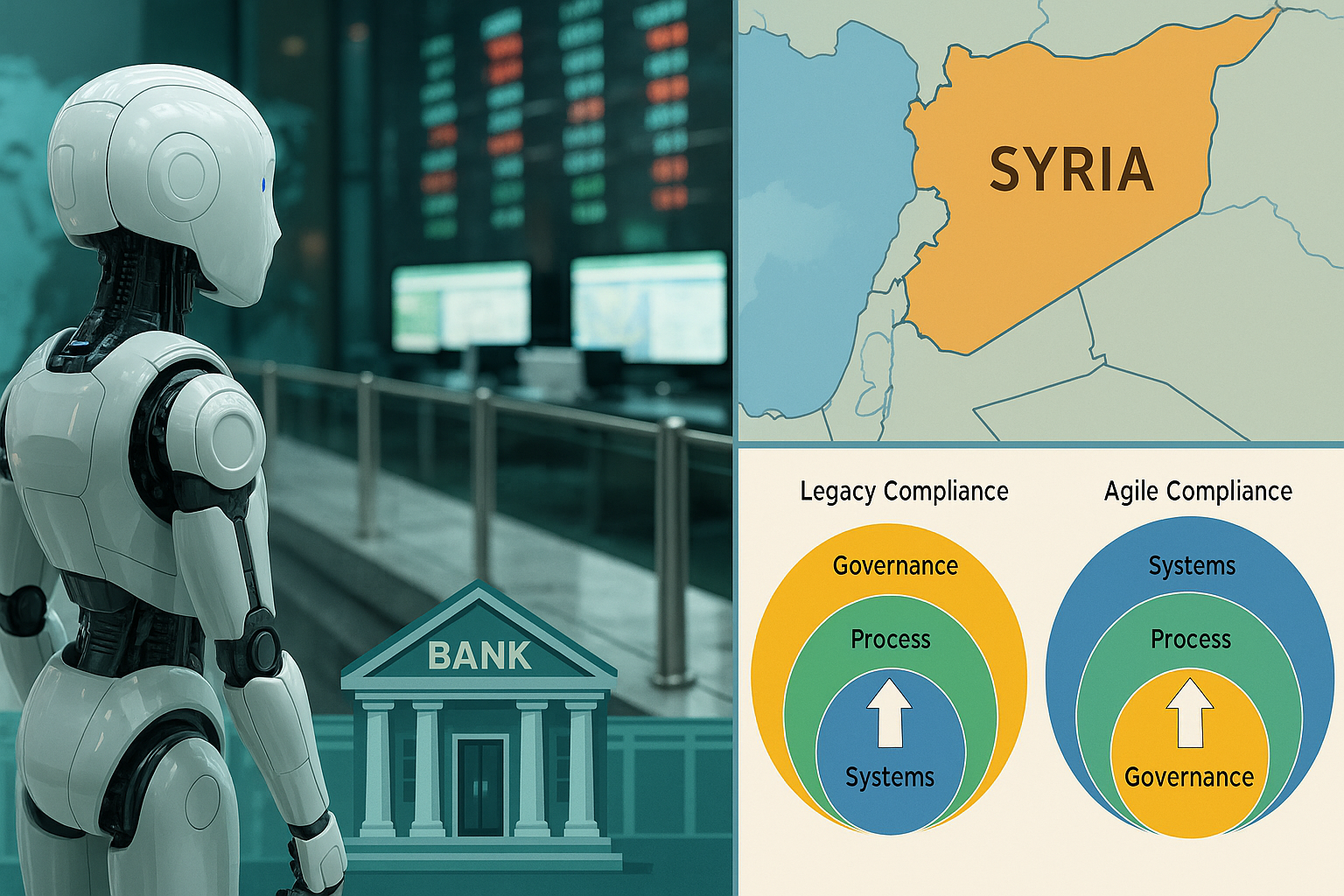AI-Powered Absolute Zero Reasoner: The Missing Piece in Your Community Bank's Competitive Strategy?
In our continuing exploration of banking technology that truly matters, the emergence of Absolute Zero Reasoner (AZR) demands attention as we navigate the evolving AI landscape. This breakthrough approach—an AI system that trains itself without external datasets—represents a transformative shift for community banks balancing innovation with regulatory compliance. While it sounds nearly like science fiction—a model generating its own challenges and verifying its own answers—research to date confirms AZR's impressive capabilities on complex financial tasks. The Stanford HAI (Human-Centered Artificial Intelligence) 2025 AI Index Report already highlights AZR as a breakthrough in self-learning systems, noting its ability to match or beat leading models on code-generation and logic tasks without relying on external datasets.
Bank Simulators: The Necessary Environment for AI Self-Play
Bank simulators have evolved dramatically—from 1990s spreadsheets through Monte-Carlo engines to today's API-driven digital-twin platforms. Modern simulators—including Amberoon's Bank Simulator—can run thousands of hypothetical risk scenarios built on a synthetic portfolio of more than 22,000 accounts and roughly $12 billion in anonymized transactions. Digital twin simulations are increasingly used to develop sophisticated virtual models representing key components and dynamics of a bank's balance sheet structure. These environments enable risk teams to replay deposit flows, loan prepayments, and fraud scenarios, revealing the dynamic feedback loop among funding costs, capital, liquidity, and market pricing—all in an isolated environment without any impact on production systems or customer data.
These simulators function as the "flight deck" environment that makes self-learning models viable—AZR proposes shock scenarios, the simulator computes financial impacts, and those outcomes provide the ground-truth signals guiding the next iteration. Importantly, AZR augments—not replaces—a bank's existing asset-liability management (ALM) engine: it feeds its self-generated stress scenarios into the same valuation model (QRM, BancWare, or in-house) so results remain fully comparable to legacy reports.
The 2025 Paradigm Shift
What's different now? Traditional AI implementation meant wrestling with massive data requirements and expensive consultants. AZR fundamentally rewrites this approach: rather than feeding thousands of labeled examples, the model invents and solves its own problems, using an internal code-executor to verify each solution. Research confirms this "zero-data" technique can outperform models trained on vast datasets.
Meanwhile, regulatory expectations continue to intensify. The Fed's SR 11-7 (model risk) and related Federal Reserve stress-testing guidance such as SR 15-18 and SR 15-19—and kindred global standards—already cover AI models, demanding transparent logic, robust validation, and tight governance. Self-learning models are welcome—provided banks can explain how they work and prove their outputs are reliable.
Why Community Banks Should Take Notice
For community institutions, AZR delivers two critical advantages: comprehensive coverage and actionable clarity. By systematically exploring thousands of stress paths, it identifies edge-case vulnerabilities early; by explaining each scenario in straightforward language, it keeps management and regulators fully informed. For resource-constrained teams, AZR compresses what was previously a multi-week scenario-design cycle into an overnight process.
Key benefits include:
- Democratized Advanced Analytics – With minimal data requirements, even mid-size banks can deploy Wall-Street-level stress testing capabilities.
- Proactive Risk Intelligence – Continuous scenario exploration transforms quarterly stress-testing into daily early-warning insights.
- Embedded Governance – Every scenario, result, and rationale is automatically logged for model-risk review, aligning with SR 11-7 and similar guidance.
Fast Forward: A Day in the Life – August 2026 at Cloud Nine Community Bank
It's 7:30 a.m. on a humid Wednesday in mid-August 2026. Jane Smith, CEO of Cloud Nine Community Bank, a $4 billion community lender headquartered in the Midwest, reviews the Statum Risk Pulse dashboard with her morning coffee.
8:00 a.m. – Automated Intelligence Overnight, Statum AZR has processed approximately 18,000 self-generated stress scenarios against yesterday's balance sheet. The dashboard highlights three "emerging stress paths"—including a soybean-price collapse combined with a 150-basis-point rate spike that would reduce next-quarter net-interest income by 12 percent. Each scenario includes plain-English explanations and is logged for SR 11-7/SR 11-17 validation.
Jane toggles to Statum KPI's peer-benchmark view, which lines Cloud Nine up against a cohort of 25 similar community banks. An on-screen overlay shows how the 12 percent NII hit would drop them from the top quartile to mid-pack—and how the recommended hedge would vault them back into leadership.
10:00 a.m. – ALCO Pre-Read Meeting with the CRO and Treasurer, Jane examines Statum AZR's recommendation to address a potential liquidity challenge: lengthen $150 million of wholesale funding and enter a pay-fixed swap. The system displays how the same 25-bank peer cohort responded, highlighting those that have already taken similar hedging actions and the projected capital impact of each option.
11:30 a.m. – Monthly ALCO Meeting Jane leads the Asset-Liability Committee meeting with confidence, her tablet displaying the Statum AZR dashboard for all attendees. Gone are the days of static presentation decks and last-minute data scrambles. Instead, the CFO begins by walking the committee through the "Flat-Top Squeeze" scenario that Statum AZR identified as a rising concern.
"What makes this particularly interesting," the CFO notes, "is that Statum KPI shows only two of our peers have recognized this pattern and adjusted their balance sheets accordingly."
The Chief Lending Officer chimes in: "Statum AZR shows our agricultural portfolio would be particularly vulnerable if this scenario coincides with the drought concerns in our western counties."
Jane appreciates how the conversation has evolved from reactive compliance exercises to proactive strategy discussions. When the committee votes to implement the recommended hedging strategy, it's not merely to satisfy regulatory requirements but to create genuine competitive advantage. The audit committee representative notes with satisfaction that every decision is automatically documented with clear rationales and comprehensive audit trails.
"12 months ago," Jane reflects to the committee, "we'd have spent three weeks preparing for this meeting and still wouldn't have had this level of insight."
2:00 p.m. – Regulatory Confidence During a routine bank examination, Jane presents Statum AZR's comprehensive audit trail: every scenario, parameter, and result is time-stamped, version-controlled, and cross-referenced to policy. Internal model-risk analysts have already validated Statum AZR's outputs, satisfying the examiner's documentation queries. The governance boxes are ticked.
4:30 p.m. – Efficient Reporting With minimal effort, Jane exports a Statum AZR summary—three pages of narrative plus detailed appendices covering the top 15 stress tests—directly into next week's board materials. No last-minute analyst scramble—just review and approval.
Jane concludes her day confident that her ALCO framework is now proactive, data-rich, and regulator-ready—all without expanding headcount. Statum AZR hasn't replaced her risk team; it has multiplied their capabilities.
Implementation Roadmap: The Agile Analytics Approach
At Amberoon, we advocate a governance-first adoption strategy:
- Strategic Assessment – Identify a specific pain point (interest-rate risk, liquidity) and engage risk and compliance stakeholders early.
- Controlled Validation – Run AZR on historical data to verify it rediscovers known vulnerabilities while exposing previously unidentified risks.
- Incremental Deployment – Progress from advisory dashboards to alerts, granting AZR limited decision authority only after performance and explainability are thoroughly proven.
With disciplined governance, Absolute Zero-style AI can evolve from promising technology to essential component in your risk management toolkit, perfectly aligning with Amberoon's Agile Analytics framework that emphasizes governance driving process, which in turn shapes technology—not the reverse.
The Bottom Line for Community Banks
The question is no longer whether autonomous scenario engines will reshape ALCO and stress testing processes, but which institutions will harness them first. At Amberoon, we believe forward-thinking banks that implement AZR technology now, particularly when integrated with Statum KPI's peer analytics, will be positioned similarly to Cloud Nine Bank's 2026 scenario—with enhanced risk intelligence creating both regulatory alignment and strategic advantage. If that reasoning power is harnessed for balance-sheet physics, community banks get SIFI-grade stress insight without SIFI budgets—democratizing capabilities previously reserved for only the largest institutions and leveling the competitive playing field in an increasingly complex financial environment.
Amberoon brings Big Tech for Small Banks, delivering GenAI, blockchain, and machine-learning solutions tuned for community institutions. Ready to explore autonomous scenario intelligence for your institution? Contact us at info@amberoon.com to discuss a tailored pilot program designed for your specific ALCO requirements.
Posts by Tag
- big data (41)
- advanced analytics (38)
- business perspective solutions (30)
- predictive analytics (25)
- business insights (24)
- data analytics infrastructure (17)
- analytics (16)
- banking (15)
- fintech (15)
- regulatory compliance (15)
- risk management (15)
- regtech (13)
- machine learning (12)
- quantitative analytics (12)
- BI (11)
- big data visualization presentation (11)
- community banking (11)
- AML (10)
- social media (10)
- AML/BSA (9)
- Big Data Prescriptions (9)
- analytics as a service (9)
- banking regulation (9)
- data scientist (9)
- social media marketing (9)
- Comminity Banks (8)
- financial risk (8)
- innovation (8)
- marketing (8)
- regulation (8)
- Digital ID-Proofing (7)
- data analytics (7)
- money laundering (7)
- AI (6)
- AI led digital banking (6)
- AML/BSA/CTF (6)
- Big Data practicioner (6)
- CIO (6)
- Performance Management (6)
- agile compliance (6)
- banking performance (6)
- digital banking (6)
- visualization (6)
- AML/BSA/CFT (5)
- KYC (5)
- data-as-a-service (5)
- email marketing (5)
- industrial big data (5)
- risk manangement (5)
- self-sovereign identity (5)
- verifiable credential (5)
- Hadoop (4)
- KPI (4)
- MoSoLoCo (4)
- NoSQL (4)
- buying cycle (4)
- identity (4)
- instrumentation (4)
- manatoko (4)
- mathematical models (4)
- sales (4)
- 2015 (3)
- bitcoin (3)
- blockchain (3)
- core banking (3)
- customer analyitcs (3)
- direct marketing (3)
- model validation (3)
- risk managemen (3)
- wearable computing (3)
- zero-knowledge proof (3)
- zkp (3)
- Agile (2)
- Cloud Banking (2)
- FFIEC (2)
- Internet of Things (2)
- IoT (2)
- PPP (2)
- PreReview (2)
- SaaS (2)
- Sales 2.0 (2)
- The Cloud is the Bank (2)
- Wal-Mart (2)
- data sprawl (2)
- digital marketing (2)
- disruptive technologies (2)
- email conversions (2)
- mobile marketing (2)
- new data types (2)
- privacy (2)
- risk (2)
- virtual currency (2)
- 2014 (1)
- 2025 (1)
- 3D printing (1)
- AMLA2020 (1)
- BOI (1)
- DAAS (1)
- Do you Hadoop (1)
- FinCEN_BOI (1)
- Goldman Sachs (1)
- HealthKit (1)
- Joseph Schumpeter (1)
- Manatoko_boir (1)
- NationalPriorites (1)
- PaaS (1)
- Sand Hill IoT 50 (1)
- Spark (1)
- agentic ai (1)
- apple healthcare (1)
- beneficial_owener (1)
- bsa (1)
- cancer immunotherapy (1)
- ccpa (1)
- currency (1)
- erc (1)
- fincen (1)
- fraud (1)
- health app (1)
- healthcare analytics (1)
- modelling (1)
- occam's razor (1)
- outlook (1)
- paycheck protection (1)
- personal computer (1)
- sandbox (1)
Recent Posts
Popular Posts
Here is a funny AI story.
Every community bank CEO now faces unprecedented...
On May 13, 2025, the U.S. government announced...




